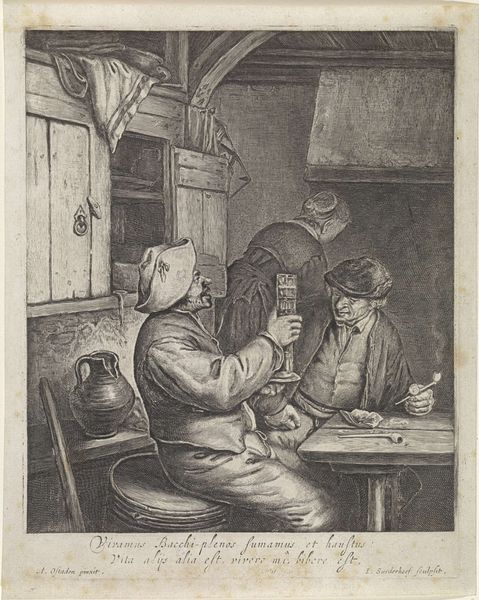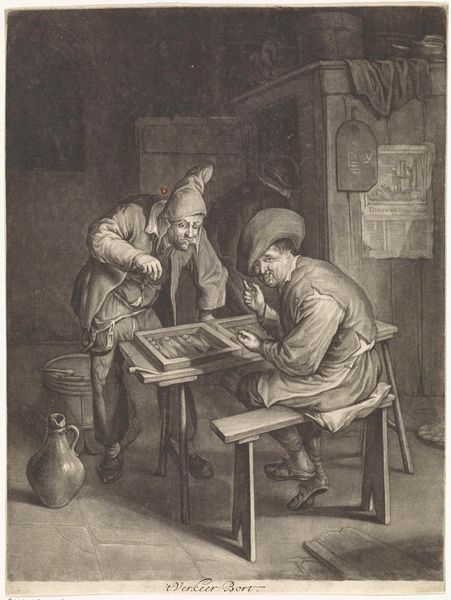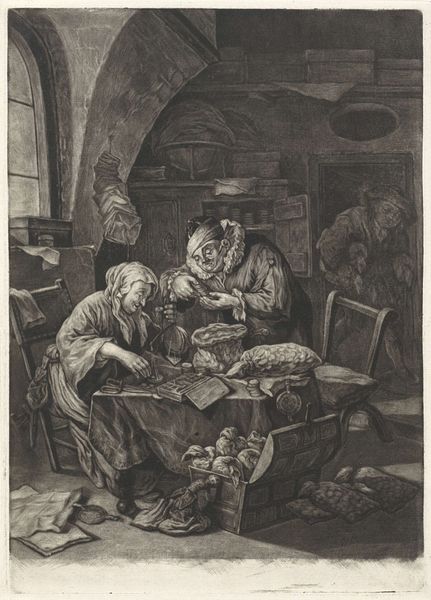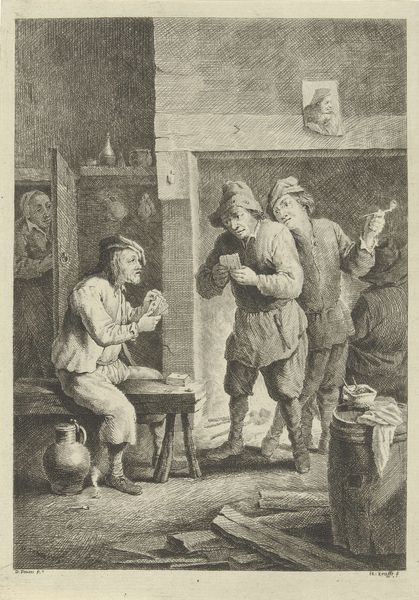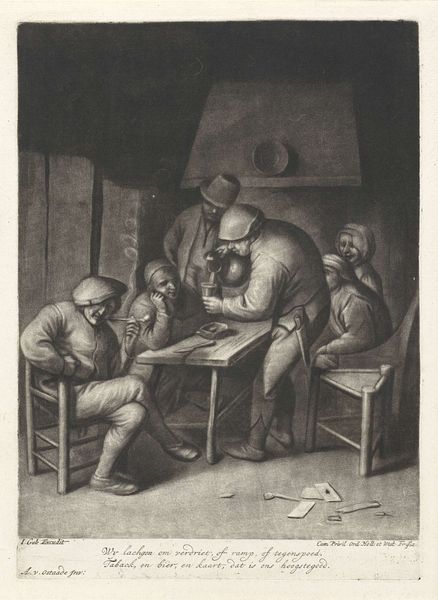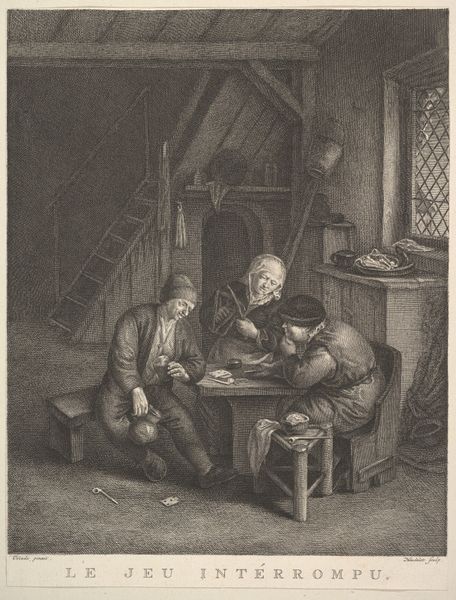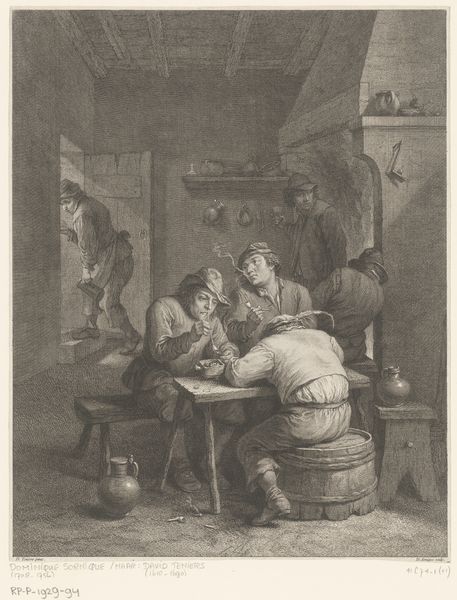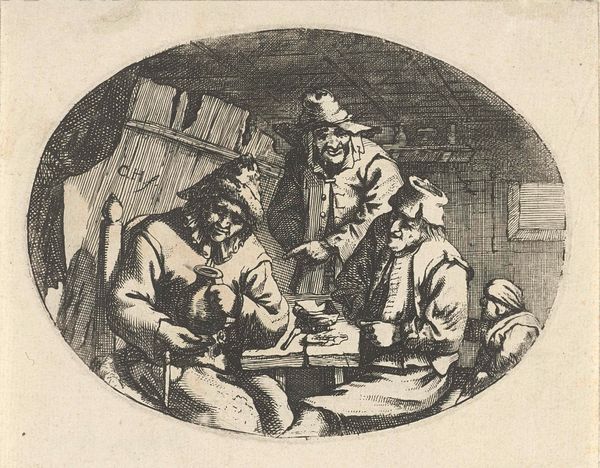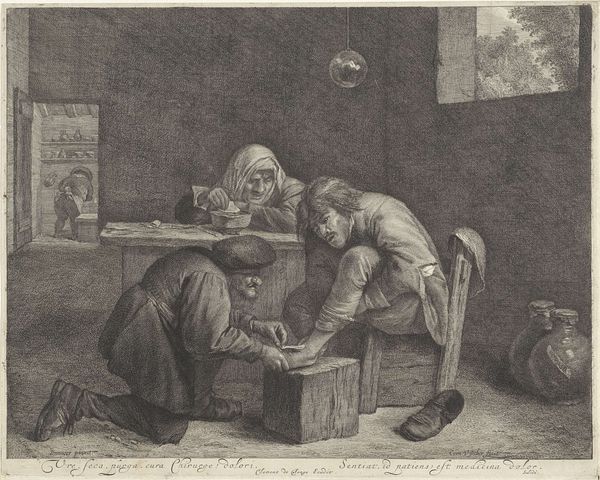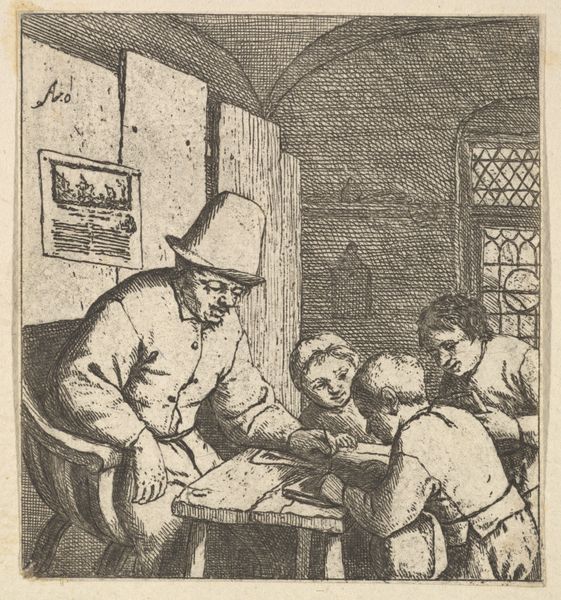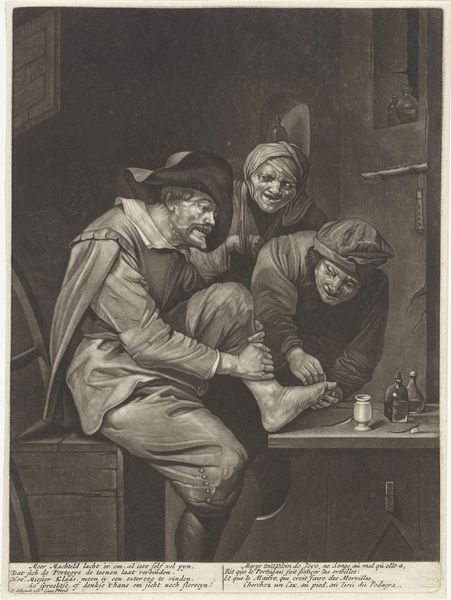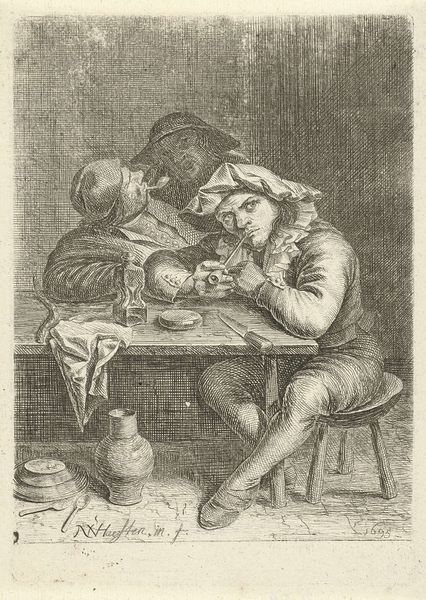
print, engraving
#
baroque
#
dutch-golden-age
# print
#
figuration
#
line
#
genre-painting
#
engraving
Dimensions: height 223 mm, width 191 mm
Copyright: Rijks Museum: Open Domain
Editor: Here we have Cornelis Danckerts’ engraving, “Three Drinking and Smoking Peasants in a Tavern,” created sometime between 1613 and 1656. There’s a real casualness to it, despite the formal rendering, almost a gritty realism. How do you interpret the scene's cultural significance? Curator: This engraving offers a glimpse into the social fabric of the Dutch Golden Age, particularly the role of taverns. What we might see as "casualness" reflects a growing acceptance—or perhaps a visual tolerance—of lower class leisure within artistic representation. Consider how this image participates in constructing a public identity for Dutch peasants. Do you notice anything about how the composition positions the viewer in relation to these figures? Editor: I see how the table is set at an angle, making it feel as though we are there, part of their group in the tavern. Curator: Exactly. These genre scenes became incredibly popular, shaping not only how people *saw* everyday life, but also how they understood the values and norms within it. Think about how repeated imagery of peasant life, even seemingly objective, reinforces certain social narratives. Editor: So, it’s not just documenting reality, it’s actively constructing a version of it for public consumption? Are these images simply stereotypes in the making? Curator: Precisely. And that's where analyzing the historical context becomes essential. Who commissioned these works, and for what purposes? Often these images, while seemingly benign, served to reinforce existing social hierarchies. Considering that, does the ‘gritty realism’ you mentioned at first still feel so straightforward? Editor: Definitely gives me a new perspective. What appeared as a candid snapshot now seems much more staged and calculated, loaded with socio-political meaning. Curator: It reveals the powerful role art plays in shaping collective memory. Editor: I'll certainly never look at a casual scene the same way again!
Comments
No comments
Be the first to comment and join the conversation on the ultimate creative platform.
